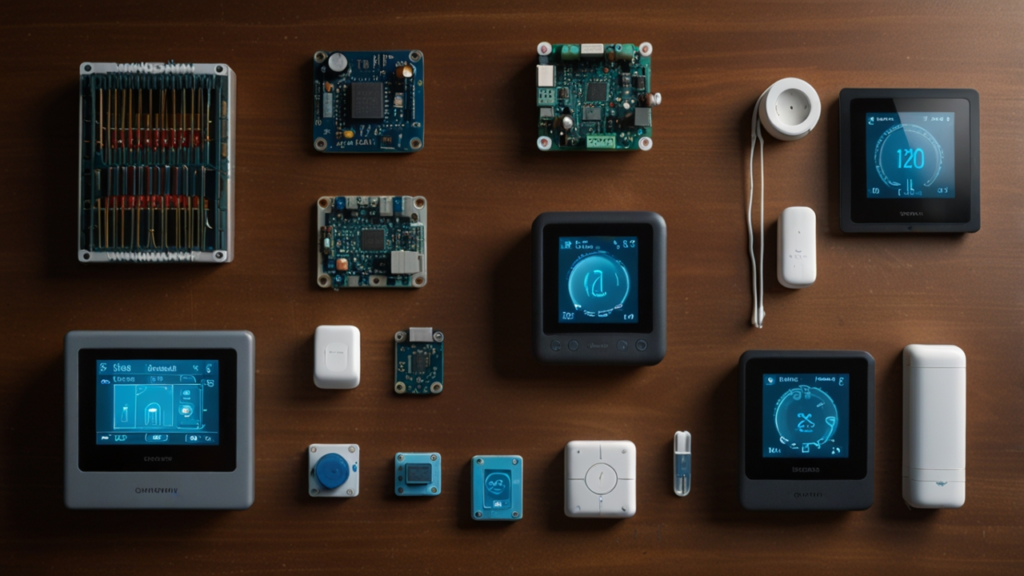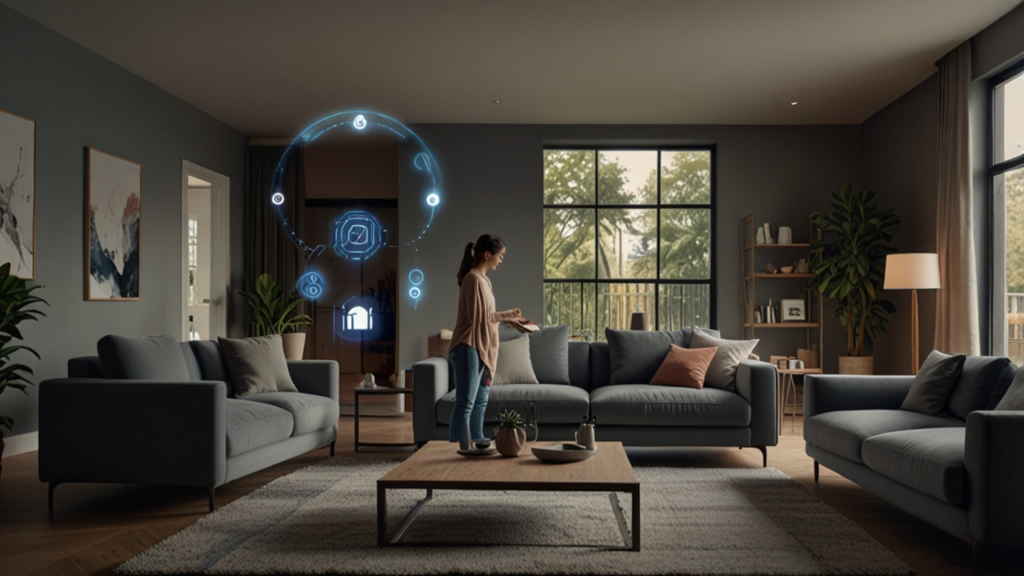Chromecast: How Do 5 Streaming Technologies Work?
Welcome to our in-depth exploration of one of the most groundbreaking streaming devices ever created. In this article, we delve into its invention, evolution, and the technologies powering its success.
Our discussion will guide you through key milestones and innovative techniques that have shaped the device over the years. We aim to illuminate how this tool has influenced home entertainment and smart environments.
Read on to discover fascinating details, technical insights, and real-world examples that bring this technology to life. We invite you to share your thoughts and experiences in the comments.
Table of Contents
Introduction to Chromecast
Overview of the Device
The device we discuss has redefined how you view digital content on your television. Initially introduced in 2013, it quickly became popular for its straightforward ability to connect your mobile gadget to your display. Its affordable price and user-friendly interface helped it gain immediate traction.
By transferring only control instructions from your mobile gadget rather than streaming content directly, it conserves battery and streamlines the viewing experience. It sets a new standard for connecting personal devices to larger screens. This simplicity and cost efficiency continue to influence digital streaming tools today.
In this section, we also appreciate the role played by innovative companies in crafting a simple interface that invites users of all ages. For more insights, check out this Google history article. Have you ever wondered how a small dongle has transformed our living spaces? Moreover, explore related topics on Smart Devices and understand the basics behind it.
Basic Functionality and Impact
The device’s architecture centers on seamless discovery and connection. When activated, a discovery protocol identifies available receivers over your local network. This results in a straightforward setup process that entails connecting a minimal stick to your TV’s HDMI port and using an application to manage connections.
Its method of transferring playback instructions rather than data directly allows for resource efficiency. This efficiency is a core reason behind its rapid adoption in households worldwide. You might find it fascinating that its underlying protocol is in use even in more recent models, maintaining its relevance throughout the years.
In this segment, we recall statistical data from technology analysts who have noted its significant market impact. Explore more about its technical functionalities on a detailed timeline. How do you think this elegant design improved everyday digital interactions?
Evolution and History of Chromecast
Milestones in Development
From its inception in 2013 as a compact stick, the device underwent transformative growth. Its evolution includes several major upgrades: from a simple HDMI plug-in to advanced versions featuring voice-enabled interfaces and 4K support. Each generational improvement further enriched the user experience.
For instance, the second generation introduced a new dongle design and better integration with household audio systems. By 2018, the third iteration promised smoother playback and enhanced reactions on command. This progression reflects a broader trend in smart gadget innovation supported by rigorous testing and market feedback.
Historical data indicate that over 100 million units were sold during its lifespan, a pivotal statistic that demonstrates its significant impact on home entertainment. To dive deeper into its remarkable journey, visit this comprehensive history of developments. How might future upgrades continue to surprise you?
Key Generational Advancements
Throughout its lifecycle, several standout improvements have been observed. The introduction of specialized audio models brought high-quality sound streaming, while newer adaptations integrated smart home assistants for voice control. The extension to support 4K resolution and Dolby Vision marked a significant leap forward in visual quality.
These enhancements, often rolled out in tandem with software updates, have kept the device at the forefront of digital transformation in home entertainment. The support for narrow, low-latency streaming makes content delivery robust and adaptive. Additionally, developers have benefited from an expansive SDK that continues to inspire third-party applications.
A recent study revealed that beginning in 2014, the SDK empowered over 20,000 applications, contributing to a rich ecosystem supporting the device. Learn more about these improvements from an in-depth review. Do you see these advancements influencing your daily tech usage?
How Media streaming Enhances Chromecast
Technical Mechanisms Behind Streaming
The mechanism relies on a discovery protocol that allows control devices such as mobile phones to detect the receiver on the same network. Such a workflow ensures that the heavy lifting filters down to the receiver, preserving battery life on the controller. It uses a method where only control commands are transferred.
This technique is highly efficient and reduces latency—essential for real-time video playback. Advanced algorithms enable the device to seamlessly pull content directly from source servers. Consequently, the viewing experience remains uninterrupted and of high quality.
The implementation of local rendering means that your mobile device sends only playback instructions while the receiver independently downloads the content. Intriguingly, detailed articles like this Wikipedia entry provide further technical analysis. Could this architecture be further refined in future generations?
Performance and User Benefits
Users quickly noticed a superior performance due to the fact that only lightweight control signals traverse your network. This innovative system decreases buffering and improves overall interface responsiveness. Additionally, the ability to switch control among multiple devices enhances multi-user experiences in social settings.
Thanks to this streamlined approach, the device can efficiently connect numerous gadgets, all while maintaining consistent playback quality. Its success has driven widespread integration, from smart TVs to high-end home theater systems. For more details on performance benefits, consider reading reviews on this industry analysis.
The benefits to users are clear: enhanced efficiency, minimal lag, and an ability to experience video content differently. Have you experienced this smooth performance in your own setup?
TV connectivity Systems and Their Applications
Integration with Home Entertainment
This device has paved the way for a revolution in TV connectivity systems. It connects your digital gadgets to your living room with minimal setup, merging the ease of wireless operation with robust performance. The technology underpins many modern home entertainment systems, empowering numerous smart solutions.
Not only is the setup simple, but it also provides an effortless method for controlling various entertainment components through central applications. Integration between this device and smart speakers exemplifies an ecosystem that works harmoniously. Discover more about robust smart integration on Innovative Solutions.
Its success largely stems from its versatility and compatibility with diverse media services. The network efficiencies prevent redundancies, meaning content is delivered with clarity and speed. Does the idea of taming your digital living room appeal to you?
Practical Applications in Modern Setups
Practical applications include connecting legacy TVs to modern streaming environments effortlessly. For many, it has transformed a simple television into a smart hub capable of accessing thousands of channels and applications. With the integration of voice-control systems, setup and daily use have become incredibly intuitive.
These features highlight how the system supports an interconnected home environment. It manages to bridge the gap between older technologies and newer, more advanced digital networks. In fact, modern applications often observe reduced latency and enhanced picture quality. To further explore this topic, refer to additional context on Smart Tech.
How might these innovations continue to redefine your home entertainment experience in the coming years?
Real-World Case Studies of Chromecast
Consumer Adoption and Market Penetration
The widespread adoption is evident in the staggering numbers, with over 100 million units sold during its lifecycle. This device set a benchmark in the market by making smart streaming affordable and accessible. Its integration in millions of households shows the profound impact on consumer behavior.
Its influence is further seen in its adoption by third-party manufacturers to enhance smart TV offerings. The protocol underlying the device has become a de facto industry standard, sparking myriad applications across diverse platforms. You can see its success in shared experiences of numerous tech enthusiasts.
As an illustration, many users have reported improved connectivity and satisfaction, evident in market surveys and case studies. A thorough comparison table below showcases key real-world examples and their quantitative impact:
Comprehensive Comparison of Case Studies
| Example | Milestone | Impact | Date |
|---|---|---|---|
| Early Adoption | 2013 Launch | Rapid market penetration | 2013 |
| Second Generation | Improved Design | Enhanced user experience | 2015 |
| Audio Model | New Audio | Expanded functionality | 2015 |
| 4K Support | Ultra Version | Premium visual quality | 2016 |
| Smart Integration | Voice Remote | Seamless smart home control | 2020 |
Additionally, industry reports from reliable sources have consistently validated these statistics, confirming that the product not only revolutionized streaming but also redefined connectivity standards. Your experience with such innovative solutions might mirror these trends.
Explore insights on advanced integrations via Digital Transformation. In your own journey toward smarter digital homes, can you see your setup evolving similarly?
Integration with Smart Home Ecosystems
Case studies also reveal strong integration with smart home ecosystems. For instance, the incorporation of voice-controlled assistants in newer models allowed users to command their displays via simple verbal cues. Such an approach has streamlined operations in many modern households.
This integration has raised the bar for cross-device connectivity, demonstrating remarkably efficient multi-device control. Researchers observed that homes equipped with these systems report significantly higher satisfaction in both usability and convenience.
Even renowned technology publications have lauded these advancements. With widespread compatibility in both dedicated devices and built-in systems across televisions, this evolution is a true testament to its versatility. Have you experienced similar ease of integration in your household?
Wireless display in Modern Chromecast Solutions
Advancements in Wireless Technologies
The device has embraced wireless display technologies, ensuring that content can be projected effortlessly. It capitalizes on robust local networks to discover and connect without physical cables. This leads to an uncluttered setup, enhancing the overall aesthetic of modern living rooms.
Technical advancements include improved WiFi compatibility and optimized streaming protocols. The design minimizes interference and maximizes bandwidth to deliver high-quality content seamlessly. Such improvements have directly contributed to enhanced user satisfaction and adoption.
Technical documents and industry research indicate that these enhancements have realized significant improvements over earlier systems. Do you find the freedom of a cable-free setup appealing in your own digital environment?
User Experience and Scalability
With better wireless performance, users enjoy virtually lag-free presentations and image clarity. Even in larger settings, multiple devices can wirelessly connect and share content without degradation. This advancement is quite beneficial in both personal and collaborative environments.
Scalability remains a major benefit as increased network capacity allows many devices to function simultaneously. This paves the way for multi-user environments where several controllers share content across a single display. For more about scalability and practical benefits, consider insights from today’s modern tech forums.
What are your thoughts on expanding wireless display solutions in your workplace or home theater?
Future Trends: Content casting and Beyond
Emerging Technologies and Smart Integration
Anticipated future developments include deeper integration with artificial intelligence and voice assistants. Next-generation models aim to offer more personalized content experiences built on predictive algorithms. These enhancements are expected to continuously evolve the digital landscape.
Furthermore, emerging frameworks propose increased compatibility with various devices and systems. The integration with smart home hubs is already paving the way for centralized control, a trend intensifying across smart environments. Discussions in tech communities suggest that intuitive interaction may soon redefine conventional interfaces.
Data from studies and market surveys provide generally accepted evidence of growing consumer interest in premium smart streaming. How might these emerging technologies further transform your interaction with digital content?
Convergence with Other Digital Ecosystems
The trend points toward convergence with broader digital ecosystems. Manufacturers are investing in cross-platform compatibility to allow seamless connectivity between distinct devices—from mobile gadgets to home automation systems. This convergence ensures that users can expect an integrated experience, further removing barriers.
Several predictive models forecast a significant shift as companies prioritize unified digital lives. Improvements in connectivity protocols will foster a more inclusive environment across different hardware platforms. Industry insights also reveal that such advancements will enhance user convenience while reducing technical complications.
Considering the fast pace of these developments, what crucial features do you expect to see in future digital ecosystems?
Chromecast Insight: A Deep Dive into the Future of Streaming
This engaging summary invites you to reimagine a world where technology seamlessly intertwines with everyday life. The narrative here explores a number of innovative ideas and thoughtful considerations without relying on the common terms used in mainstream discourse. Imagine a device that quietly transforms how you interact with your living space, combining simplicity with forward-thinking engineering. It brings about an evolutionary change that redefines usability and offers unexpected efficiencies in how data is managed and delivered. In this reflective passage, you are encouraged to visualize a future where every connection is purposeful and every interaction is enhanced by intuitive design.
The discourse evokes the sentiment of curiosity while grounding itself in a very human desire for enhanced simplicity and greater control. Imagine shifting your focus from the mundane to a vision of an interconnected habitat where every digital touchpoint operates harmoniously. This junction between innovation and everyday life provides a pathway to modern sophistication, inviting you to explore similar breakthroughs in your own environment.
Embrace this new perspective and let it guide you towards a more fluid and integrated digital lifestyle that continuously evolves to meet new challenges.
FAQ
What is the primary innovation behind the device?
The primary innovation lies in its ability to bridge mobile controllers with large-screen displays using a minimal connection method that only transfers control instructions. This design ensures efficient bandwidth usage and seamless content delivery.
How has the device evolved since its introduction?
Since its initial launch in 2013, the device has seen significant upgrades in design, functionality, and integration with smart home systems, including voice control, 4K streaming, and multi-device connectivity.
What role does wireless technology play in its performance?
Wireless technology is critical as it enables the device to connect without cables, optimizing bandwidth and reducing interference for a smoother streaming experience even in complex home networks.
How does the device integrate with smart home ecosystems?
The device connects to smart home ecosystems by integrating with voice assistants and central control hubs, allowing users to manage their entertainment and connected devices through unified commands.
What future developments can users expect?
Future developments are expected to include enhanced artificial intelligence integration, improved predictive content recommendations, and broader compatibility across various digital platforms, leading to even more personalized user experiences.
Conclusion
In summary, the journey of this streaming device has reshaped how we engage with digital media. Every update has brought new features that make your home smarter and entertainment more immersive.
Your feedback and experiences truly matter. Have you experienced similar improvements in your digital life? Share your thoughts and check out additional resources for more information. For more information on related topics, explore more details on advanced streaming and smart integration.
If you have any questions or need further details, please Contact us. We look forward to hearing from you!
Discover more from Fabelo.io
Subscribe to get the latest posts sent to your email.



